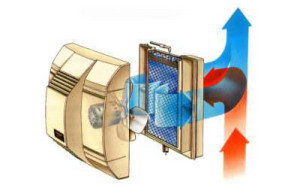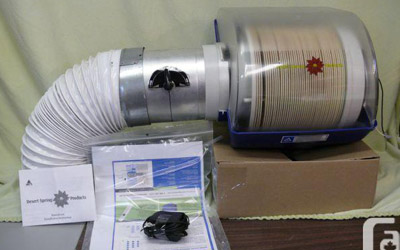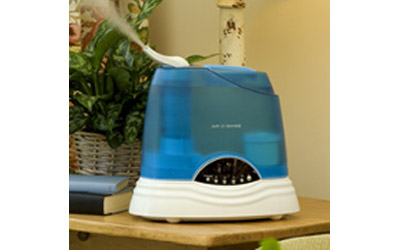Humidifiers
Techno AdminIn standard10th January, 2018
What is humidity ?
The term humidity is usually taken in daily language to refer to relative humidity. Relative humidity is defined as the amount of water vapor in a sample of air compared to the maximum amount of water vapor the air can hold at any specific temperature . Humidity may also be expressed as Absolute humidity and specific humidity. High humidity makes people feel hotter outside in the summer because it reduces the effectiveness of sweating to cool the body by preventing the evaporation of perspiration from the skin.
WHY WE USE HUMIDIFIERS ?
Humidifiers reduce the possibility of winter infection by keeping the mucous membranes moist and allowing the tiny hairs in the nose and throat to work to expel any particles that were suspended in the air. Dry aching sinuses receive a great deal of relief from a humidified bedroom. Sleep with a snoring partner? Humidifiers relieve the intensity and noise level of the snoring. Cold symptoms are greatly relieved by using a humidifier in your bedroom at night. Dry, itchy skin is prevented, and chapped lips are relieved with humidifiers. Unpleasant static electricity shocks are reduced by humidifiers. Valuable wood furniture and floors, musical instruments are protected from cracking and warping.
How Do Humidifiers Work ?
All humidifiers for central forced warm air heating systems work on the same principle—as air is heated, it can and will absorb additional moisture from an evaporative media. To humidify the air you need heat, air movement and the presence of water for evaporation. What sets General evaporation. humidifiers apart is their efficiency and economy of operation in using this basic principle to add comfort to your home.
TYPES OF HUMIDIFIERS By Shape
- Flow – through
- Drum
- Rotary Disc
- Portable
- Bypass Type
- Atomizing or
- Steam Type

Flow – Through Humidifier
Flow-through humidifiers are installed on the vertical warm air supply or cold air return plenum.

Drum Type
Like flow-through humidifiers, reservoir or drum-type humidifiers rely on the normal pressure differential created in a forced warm air heating system to direct a portion of the heated air to the humidifier where it passes through a water waterladen evaporator drum sleeve.

Rotary Disc Type
The simplicity and effectiveness of a drum style humidifier is the cleanliness of a low through,100% water efficient, and low maintenance. There are no pads or screens to replace and it really does work!

Portable Type
Small, lightweight design moves easily from room to room.
Virtually silent! Ideal for children’s rooms, offices and bedrooms. Cool, gentle humidity. Rotating nozzle allows you direct the flow of the vapor

Atomizing or steam humidifiers
There are limited number of atomizing or steam emitting furnace humidifiers on the market today. For the most part, these units are expensive energy hogs. They consume large amounts of power and in the case of atomizing units in particular, may allow un evaporated water droplets to enter the duct work and cause condensation, rusting and other problems. These units are mechanically susceptible to mineral problems as well.
Different Kinds Of Humidifiers
Humidifiers are to be found in several quite different types. At the top end of the scale, there are central humidifiers built into your furnace system. On the other end, there are room humidifiers and there are several different technologies used in room humidifiers.
Central humidifiers
Certainly the most convenient, and require the least amount of maintenance, usually once per season. A central humidifier system will disperse humidity throughout your house, so is particularly helpful in preserving your belongings. However, I have found that for bedroom use, such as reducing snoring, a room humidifier works best.
Room humidifiers
There are several kinds of these and include warm mist, cool mist and ultrasonic humidifiers. People do not prefer traditional warm mist humidifiers because of the cost of maintenance, and because they had the lowest level of customer satisfaction.

Ultrasonic
These are energy misers and the quietest. Formerly ultrasonic humidifiers were notorious for creating white mineral dust and came in cool mist.
Air Washers
These produce a cool water vapour mist by using a rotating disk. The Air Washer works on the self-regulating evaporation principle and thus it requires no additional control systems to ensure optimal air humidity.
Evaporative
In Evaporative Humidifiers air is driven through an anti bacterial
wick or filter to get water vapor into the air. These kinds of units are usually reliable and raise the humidity fast. They do tend to have a moderate amount of noise associate with them.
Steam vaporizer
Steam vaporizer
I do not advise buying these since they are like having a kettle of water on the stove top, and can get hot and cause burns for pets or young children.

Cool Mist Humidifiers
Cool Mist Humidity is produced by blowing air over or through a wick in water. The moist vapor is dispersed at room temperature. Cool Mists are available in, central/whole house, multi room and single room [ tabletop] humidifiers. Small humidifiers and single room humidifiers are available in both cool mist and warm mist types.
Warm Mist Humidifier
Warm Mist usually involves a heating element in the humidifier that heats the water before
dispersing it into the air. The addition of a heating element, usually has warm mist humidifiers be slightly more expensive to buy initially, and are more costly to run. You prefer a cool or a warm mist humidifier, is a matter of personal preference and geography. Warm mist feels more comforting in a winter bedroom or child’s room.
Recommendations for comfort
Humans control their body temperature by sweating and shivering. The Environmental Protection Agency recommends keeping relative humidity between 30% and 55%, with below 50% preferred to control dust mites. At high humidity sweating is less effective so we feel hotter; thus the desire to remove humidity from air with air conditioning in the summer. In the winter, heating cold outdoor air can decrease indoor relative humidity levels to below 30%, leading to discomfort such as dry skin and excessive thirst.
How much is too much?
Too little humidity makes people feel uncomfortable. Too much can cause condensation, mould, mildew, and rot as the warm moist air hits cool surfaces.
Outside
- -20°F
- -20°F to -10°F
- 10°F to 0°F
- 0°F to +10°F
- +10°F and above
- Summer months
Recommended House Humidity
- 15%
- 20%
- 25%
- 35%
- 40%
- Off
Problems that can occur with humidifiers
Any problems with humidifiers always relate to improper usage and lack of regular cleaning.
White dust: Occurs from the dispersion of minerals from the water vapor and these are very fine lung penetrating particles and can cause respiratory problems. Assuming that most people do not have ready access to a low cost source of distilled water or reverse osmosis water.
Bacteria and fungi: Bacteria can grow in the tanks of any humidifier if it is not properly cleaned out or it has no preventative technology built in. Symptoms can be flu like respiratory, in some cases such as legionaires disease or pneumonitis very serious.
Preventing Humidifier Problems
-
Elevate your humidifier off the floor level and direct the vapor upwards. Do not let your carpeting, windows or wood floors get wet as you can cause mold growth or warping of floors. Turn down the humidistat and decrease water vapor.
-
Use a hygrometer to monitor interior humidity levels if your humidifier does not have a built in humidistat, although the better ones nowadays have this feature built in.
-
Follow the manufacturer’s directions for cleaning religiously. We recommend cleaning by putting all parts in the dishwasher once a week but rinse and dry each time you refill the humidifier. Always clean out any visible scaling or any other impurities with white vinegar or hydrogen peroxide.
-
Use distilled water if you can get hold of it cheaply and more especially if you have well water and live in a rural area.
-
The better humidifiers use demineralization cartridges or antibacterial filters. Remember to order replacements; this is not a place to economize!
-
Always clean your humidifier thoroughly at the beginning or end of any season.
-
Central humidifiers which are on your furnace, follow the manufacturer’s cleaning directions.
